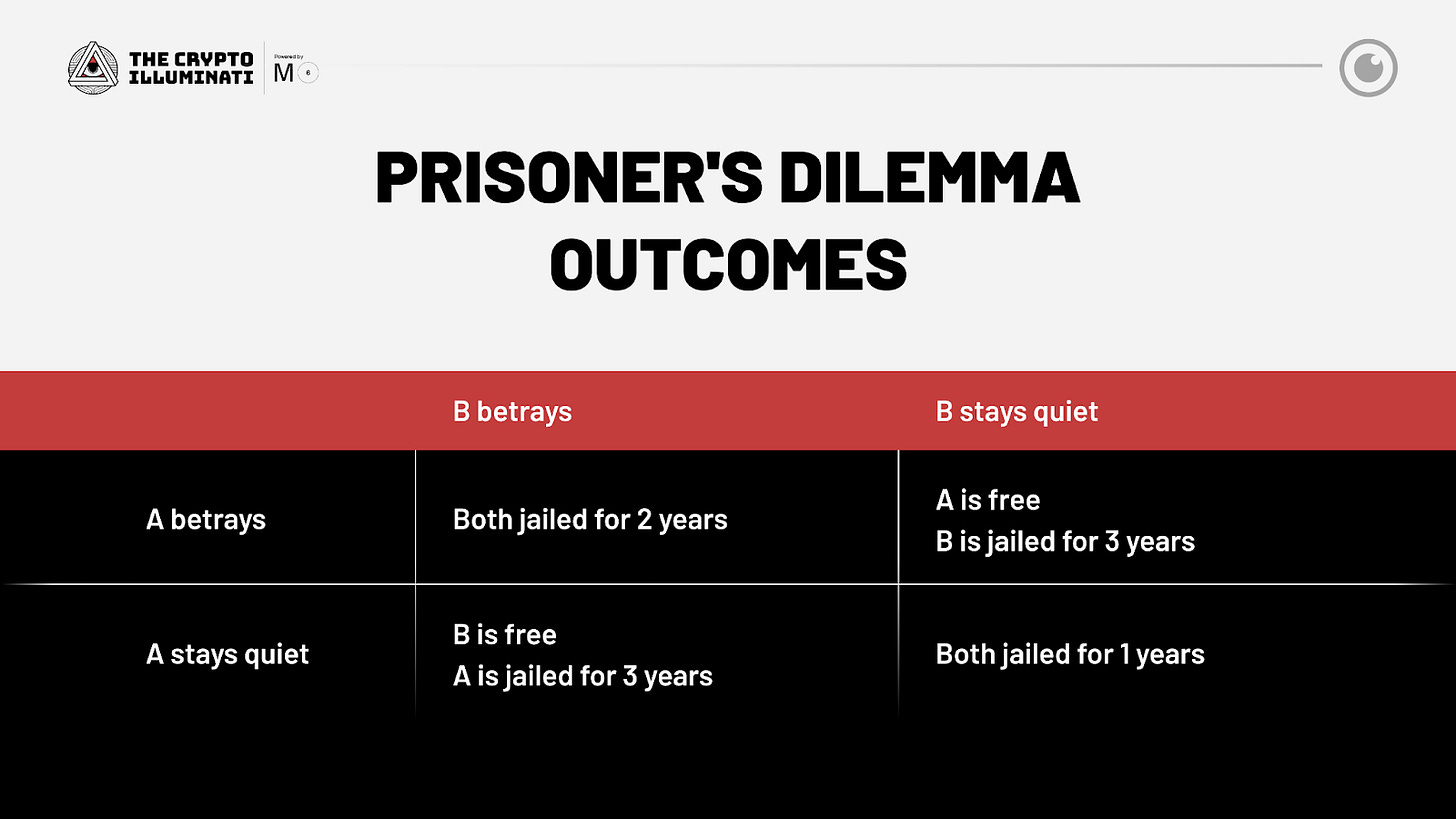How We Apply Game Theory in Crypto & What Is It?
Game theory involves studying strategies, decision-making, and their impact on parties involved in a game.
Game theory involves studying strategies, decision-making, and their impact on parties involved in a game. The invention of game theory is to create optimal decision-making of free competing actors in a strategic environment. It pulls together mathematics, psychology, and philosophy. Game theory is applicable in multiple fields, including business, finance, political science, and economics.
A Brief History of Game Theory
John Von Neuman published a series of books based on the theory in 1928. However, the popularity of game theory increased with the development of a sample non-cooperative game – the Nash equilibrium.
In the Nash equilibrium, each player's strategy is optimal when considering the decisions of other players. This way, no participant gains value in changing their approach with assumptions that other individuals made no changes. An excellent example of this system model is the Prisoner’s dilemma.
Before we get started... Want early access to our research threads? Sign up to our Substack to receive daily coverage on everything you need to know about going on in the crypto directly in your inbox:
Done? Now let’s dive in!
The Prisoner’s Dilemma
This model is one of the most popular sample instances of game theory. In this case, we have two criminals, A and B, subjected to interrogation on their arrest. Both criminals must be screened independently, ensuring no communication between the parties. Here, the prosecutor convinces each criminal to testify against the other, reducing one’s charge. On this occasion, if criminal A testifies against B, he is free while B is jailed for three years and vice versa. If A and B betray each other, they are jailed for two years. However, if both A and B remain silent and do not betray each other, they are sentenced to one year of imprisonment due to insufficient evidence.
Here are the possible outcomes based on their individual choices:
The best case would be for either A or B to betray. However, it would be necessary for the other to remain silent, and there are no criteria to predict what decision the other would take. Considering the reward, most prisoners would act in self-interest betraying the other. This approach would render both criminals two-year imprisoned. Since this is not the best outcome, the best option is to remain silent, which would cause a one-year jail sentence for the pair.
The Prisoner's dilemma has many possible outcomes. It illustrates how game theory is applicable in investigating human behavior and possible situations based on decision-making.
Game Theory and Crypto
Game theory is crucial in designing secure and trustless blockchain protocols like Bitcoin. With BTC, game theory collaborates with cryptography resulting in a Byzantine fault-tolerant system (BFT). Using game theory in the crypto niche led to the birth of crypto-economics.
Crypto-economics refers to studying blockchain protocols and the potential consequences associated with the design. It also considers the behavior of “external inputs” that aren’t part of an ecosystem but potentially could join the system and cause internal disruption. Let’s look at BTC as a test case.
The Bitcoin blockchain operates as a distributed system with multiple nodes in different locations. BTC relies on the consensus of these nodes to validate transactions and blocks. Unfortunately, these nodes do not trust each other. How can blockchains prevent disruptions associated with bad actors?
With BTC, an implemented feature, the Proof of Work (PoW) agreement algorithm, protects it from malicious activity. The algorithm applies cryptography methods causing the mining process to be extraordinarily costly and quite demanding. As a result, the mining process becomes competitive.
The Proof of Work strategy in cryptocurrencies motivates the mining nodes to act honestly. This strategy ensures that invested resources are not lost. On the other hand, any malicious activities undergo punishment. Corrupt mining nodes lose value (money) and get kicked out of the network. Practicing transparency and securing the blockchain network is best if you are mining.
Putting it All Together
Using the gaming theory, you can examine human behavior and rational decision-making activity. It’s best to incorporate game theory in designing decentralized systems. Bitcoin, for example, is a blockchain protocol that combines cryptography and game theory to build a decentralized ecosystem resistant to attacks. Other cryptocurrencies apply gaming theory using techniques like Proof of Stake (PoS).
Game theory allows you to incentivize consensus models and build decentralized systems that are secure from attacks. When analyzing the strategic interactions, you can create systems that propagate players toward specific desired outcomes. You can also design trustless systems based on code instead of human mediation.
Since blockchain technology is still in its infancy, we are moving into an era of decentralization. The key elements forming our base are the dynamics of game theory, which ensures that the social functionalities of these innovations are met.
Subscribe to receive our weekly newsletter and in-house research content!
Please Share, Leave Feedback, and Follow Us on Twitter, Telegram, and LinkedIn to stay connected with us.



